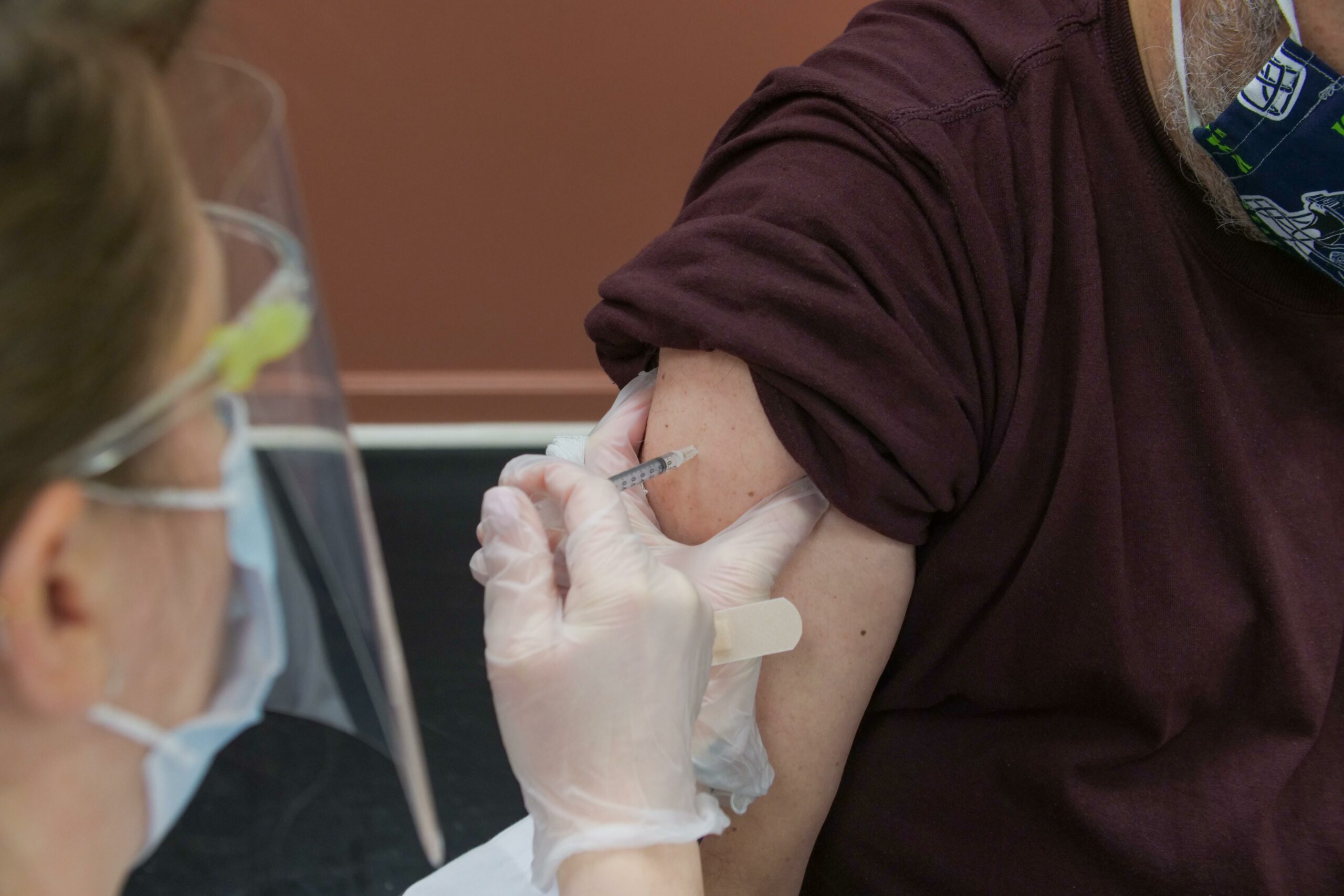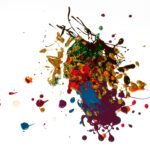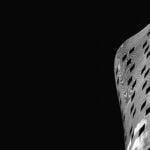Are you curious about the ancient healing practice of acupuncture? Well, get ready to be amazed by some surprising facts! In this article, we’ll delve into the fascinating world of acupuncture, exploring its roots in ancient China and debunking the misconception that it hurts. As a seasoned healthcare professional and writer specializing in natural remedies, I’m excited to share this journey with you. So, let’s dive in and uncover some incredible and lesser-known fun facts about acupuncture!

Fun Facts About Acupuncture
Ah, acupuncture. The ancient practice that has been around for over 2,000 years. You may have heard of it before, but did you know that the word “acupuncture” actually comes from the Latin words for needle and to prick? It’s quite fitting, considering the tiny needles used in this healing art.
Here’s another fascinating tidbit: there are over 2,000 different acupuncture points on the human body. That’s right, over 2,000! Each point has its own special function and can work wonders on both our physical and mental-emotional well-being. It’s like unlocking a secret door to the body’s natural healing powers.
Now, you might be picturing needles as thick as your finger, but that couldn’t be farther from the truth. Acupuncture needles are actually super thin, about as thin as a strand of hair. Don’t worry, though, they’re not painful like you might imagine. In fact, many people find acupuncture incredibly relaxing and even fall asleep during their sessions.
Speaking of sessions, did you know that acupuncture can be used with electricity? Yep, you heard that right. This technique, known as electroacupuncture, involves small electric currents being applied to the acupuncture needles. It can enhance the effects of acupuncture and is particularly helpful for pain management.
One of the most remarkable things about acupuncture is its versatility. It can treat a wide range of conditions, from pain to infertility. It’s a truly individualized and patient-centered form of medicine, where the practitioner considers each person’s unique needs and imbalances.
But humans aren’t the only ones who can benefit from acupuncture. Animals, too, can experience the healing effects of this ancient practice. Think about it as giving them a little energy boost to help them feel their best.
Now, you might be wondering if acupuncture is just some New Age trend, but let me assure you, it’s been around for centuries. It has evolved over time and has even been adapted for use in the West. In fact, acupuncture is recognized as a legitimate medical practice and has gained popularity in countries like China and Britain.
Acupuncture is rooted in traditional Chinese medicine, which is all about energy flow in the body. The goal of acupuncture is to regulate the flow of Qi, the life force energy, through the body’s meridians. It’s like untangling a tangled string to restore harmony and balance within.
But acupuncture isn’t just about treating specific ailments. It’s also about improving overall health and well-being. You see, acupuncture can help reduce stress and promote relaxation. It’s like pressing the reset button for your body and mind, allowing you to find your inner calm.
And here’s the best part: acupuncture needles have come a long way. They’ve evolved over the years to be more comfortable for patients. So, if you’re worried about pain or discomfort, let those fears melt away. Acupuncture can be a gentle and soothing experience.
So, there you have it. Some surprising fun facts about acupuncture. From its ancient origins to its modern-day applications, acupuncture continues to be a fascinating and effective healing practice. Whether you’re seeking pain relief or simply looking to enhance your well-being, acupuncture might just be the answer you’ve been searching for.
“Unlock the secrets of your body’s natural healing powers with acupuncture.”
“Acupuncture: the versatile and patient-centered form of medicine that can bring balance and harmony to your life.”
“Relax, rejuvenate, and restore with the gentle touch of acupuncture needles.”
Are you ready to explore the fascinating world of acupuncture? Get ready to be amazed by the wonders of Community Acupuncture, where ancient healing techniques are brought to life in modern times. Discover Facts About Acupuncture In Ancient China and delve into the rich history of this ancient practice. Dive into the Acupuncture Blog and uncover valuable insights and tips from experts in the field. Have you ever wondered How Many Acupuncture Points Are There? Click here to unravel the mystery and broaden your knowledge. Learn about the origins of acupuncture by exploring When Was Acupuncture Invented. And if you’re intrigued by numbers, don’t miss out on discovering Acupuncture Facts And Statistics. Embark on this journey with us and click the links for a deeper understanding of the intriguing world of acupuncture.
- Community Acupuncture
- Facts About Acupuncture In Ancient China
- Acupuncture Blog
- How Many Acupuncture Points Are There
- When Was Acupuncture Invented
- Acupuncture Facts And Statistics
Facts About Acupuncture In Ancient China
Acupuncture, a renowned ancient healing practice that originated in China, holds a treasure trove of fascinating and lesser-known facts. Let’s embark on an enlightening journey to uncover the intriguing ways acupuncture was employed in ancient China and how it continues to influence modern medicine.
1. Qi: The Vital Life Force
In ancient China, acupuncture was deeply interconnected with the concept of Qi (pronounced “chee”), which refers to the vital life force that flows through our bodies. Ancient Chinese believed that imbalances in Qi could lead to illness or disease. By stimulating specific acupuncture points, practitioners sought to harmonize and regulate the flow of Qi, restoring balance and promoting optimal well-being.
“Just like the ebb and flow of a river, the delicate balance of Qi keeps our bodies in harmony, nourishing every aspect of our being.”
2. The Miraculous Meridians
Acupuncture’s foundation lies in the meridian system, an intricate network of pathways that serve as channels for the flow of Qi. In ancient China, it was believed that there were 12 main meridians, each corresponding to a different organ system. These meridians interconnected the various aspects of the body, forming a comprehensive map of energy pathways.
“Imagine these meridians as bustling highways, carrying the life force energy to nourish every cell, tissue, and organ, ensuring their vitality.”
3. The Astonishing Acupuncture Map
Ancient Chinese physicians had an astounding level of knowledge when it came to acupuncture points. They identified over 300 specific points on the body where needles could be inserted to influence the flow of Qi. The locations of these points were carefully mapped out based on extensive observation and expertise passed down through generations.
“Take a moment to consider the incredible precision required to pinpoint over 300 unique acupuncture points on the human canvas of life.”
4. A Holistic Approach to Healing
Ancient Chinese healthcare revolved around a holistic perspective, firmly believing that the mind, body, and spirit were intrinsically linked. Acupuncture was not simply used to treat ailments; it was also utilized to promote overall well-being. By addressing the root imbalances within the body, acupuncture aimed to restore harmony and enhance the body’s natural healing abilities.
“In ancient China, the focus wasn’t solely on treating symptoms but on nourishing the roots of health, allowing the blossoming of vitality and balance.”
5. Cupping: A Complementary Art
Alongside acupuncture, cupping gained popularity in ancient China as a complementary therapy. Cupping involves creating suction on the skin using glass or bamboo cups, which helps stimulate blood flow, promotes relaxation, and releases tension. This technique was often used alongside acupuncture to enhance its healing effects.
“Just as a gentle breeze complements the beauty of a blossoming flower, cupping danced in harmony with acupuncture, enhancing the holistic tapestry of healing.”
6. Tales of Stone Needles
Did you know that the initial acupuncture needles were not made of stainless steel but of stone materials? Ancient Chinese history indicates the use of stone needles in acupuncture before the transition to metallic needles. These stone needles were crafted meticulously and varied in size and shape according to the specific acupuncture point being accessed.
“Picture the ancient acupuncturists with their stone needles, delicately tapping into the wellspring of healing energy, etching their role in the annals of ancient medicine.”
7. The Written Word Preserves Acupuncture
Without the written word, the knowledge of acupuncture might have been lost to the winds of time. Ancient texts such as the “Yellow Emperor’s Inner Canon” contributed significantly to the preservation and development of acupuncture techniques. These texts documented various acupuncture points, meridians, and treatment methods, allowing this ancient practice to transcend generations and benefit countless individuals.
“The pen became a mighty sword, etching the wisdom of acupuncture into the pages of history, ensuring its legacy will continue to ripple through the ages.”
8. Ancient Wisdom Enlightening the Modern World
Today, the wisdom and knowledge of acupuncture from ancient China continue to shape and impact modern medicine. As scientific research and advancements emerge, acupuncture’s efficacy is increasingly recognized and integrated into conventional healthcare systems worldwide. Its ability to work synergistically with other approaches reflects the ever-evolving nature and broad applicability of this ancient healing art.
“The bridges built between the past and present, connecting ancient wisdom with present knowledge, illuminate the path towards a harmonious future of holistic healthcare.”
In conclusion, these enchanting facts transport us to an era where the needle’s gentle prick held the power to restore balance, nourishing the body and soul. Acupuncture, with its roots firmly embedded in ancient China, remains an awe-inspiring healing practice that continues to fascinate and transform lives around the globe.
So, the next time you lay eyes upon an acupuncture needle, remember the remarkable journey it has undertaken through the annals of ancient China, carrying with it centuries of wisdom, healing, and profound understanding of the body’s intricate harmony.
It Doesn’t Hurt!
When it comes to acupuncture, one of the most common concerns that people have is whether it hurts. Well, I’m here to put your mind at ease and tell you that acupuncture doesn’t hurt! The truth is, acupuncture needles are as thin as a strand of hair, and you’ll barely feel a thing when they’re inserted into your skin.
Think about it like this: have you ever prickled your finger with a sewing needle? It’s a quick pinch, right? Well, acupuncture needles are even thinner than sewing needles, so imagine how minimal the sensation is!
But how can such thin needles have such a powerful effect on our health? That’s where the magic of acupuncture lies. These tiny needles are strategically inserted into specific acupuncture points on the body, which are like little energetic gateways. By stimulating these points, acupuncturists can help restore balance to the body and alleviate various symptoms and conditions.
“Don’t worry, acupuncture needles are as thin as a strand of hair, so you’ll barely feel a thing during a treatment.”
Now, you might be wondering, how do they choose the right acupuncture points? Well, acupuncturists are skilled in tongue and pulse diagnosis. They’ll carefully observe the color and coating of your tongue and feel your pulse to gather information about your overall health. This personalized approach allows them to target the root imbalances in your body and address them effectively.
“Using tongue and pulse diagnosis, acupuncturists can pinpoint the imbalances in your body and provide targeted treatment.”
It’s important to remember that acupuncture is a patient-centered approach. This means that acupuncturists take into account your individual needs and tailor the treatment specifically for you. Whether you’re seeking pain relief, stress reduction, or simply want to improve your overall well-being, acupuncture can be a valuable addition to your healthcare routine.
“Acupuncture is a patient-centered medicine that addresses root imbalances and their effects on the whole system.”
Now, you might be wondering how acupuncture fits into the larger healthcare picture. Well, I’m happy to tell you that acupuncture can complement conventional medicine and serve as an adjunct to your treatment plans. Many healthcare providers recognize the benefits of acupuncture and may even recommend it alongside other therapies.
“Acupuncture can complement conventional medicine and enhance your overall treatment plan.”
If you’re interested in diving deeper into the world of acupuncture, there are some great resources out there. Websites like tenfunfacts.com, balancecharleston.com, and premierechiro.com provide informative and trustworthy information about acupuncture. Additionally, you can explore sites like capefearacupuncture.com and health.clevelandclinic.org for more insights and perspectives.
“For more information about acupuncture, check out reputable sources like tenfunfacts.com, balancecharleston.com, and premierechiro.com.”
So, the next time someone tells you that acupuncture hurts, you can confidently share these fun facts and educate them about the true nature of this ancient healing practice. Remember, acupuncture is a gentle and effective therapy that has been transforming lives for over 2,000 years. Don’t let the fear of pain hold you back from experiencing its remarkable benefits for your physical, mental, and emotional well-being.
“Acupuncture is a gentle and effective therapy that has been transforming lives for over 2,000 years. Don’t let the fear of pain hold you back from experiencing its remarkable benefits.”
FAQ
Q: How long has acupuncture been practiced?
A: Acupuncture is one of the oldest forms of healthcare, dating back over 2,000 years.
Q: What is the meaning of the word “acupuncture”?
A: The word “acupuncture” comes from the Latin words for needle and to prick.
Q: How many acupuncture points are there on the human body?
A: There are over 300 acupuncture points on the human body, and acupuncturists rely on tongue and pulse diagnosis to locate them.
Q: What does acupuncture focus on?
A: Acupuncture is a patient-centered medicine that addresses root imbalances and their effects on the whole system.
Q: What conditions can acupuncture be used for?
A: Acupuncture can be used for various conditions, including pain relief, stress reduction, wellness, and prevention.
- Jesus Bible: Discover Jesus’s Story Throughout Scripture - April 27, 2025
- Don Luis: Unraveling the 16th-Century Virginia Mystery - April 27, 2025
- Captain J’s Kauai Tours: Unforgettable Na Pali Coast Adventures - April 27, 2025
















